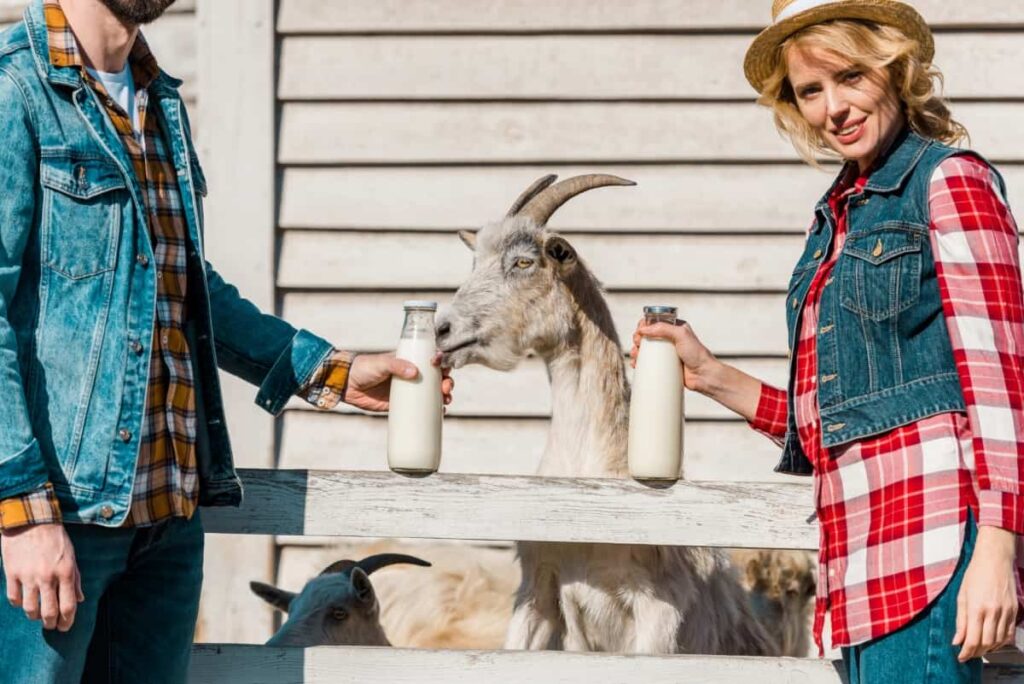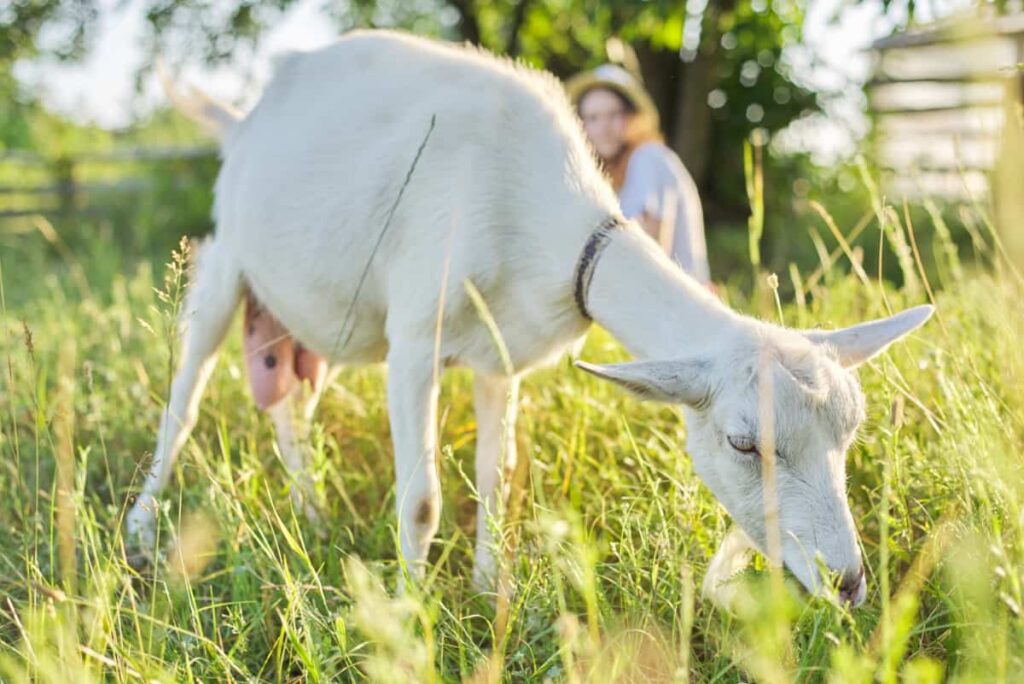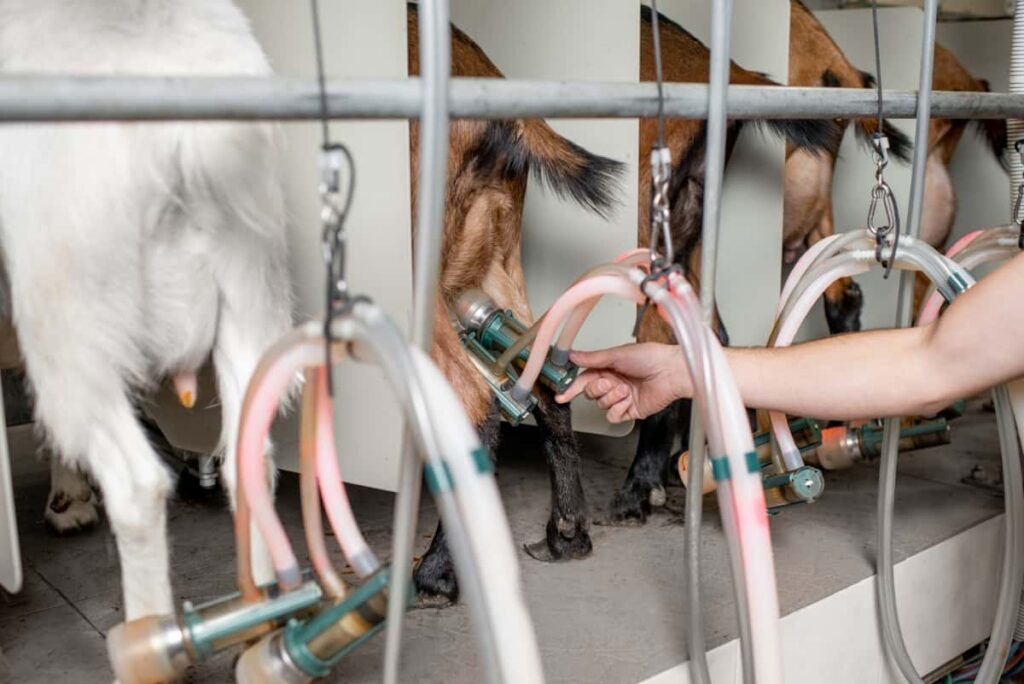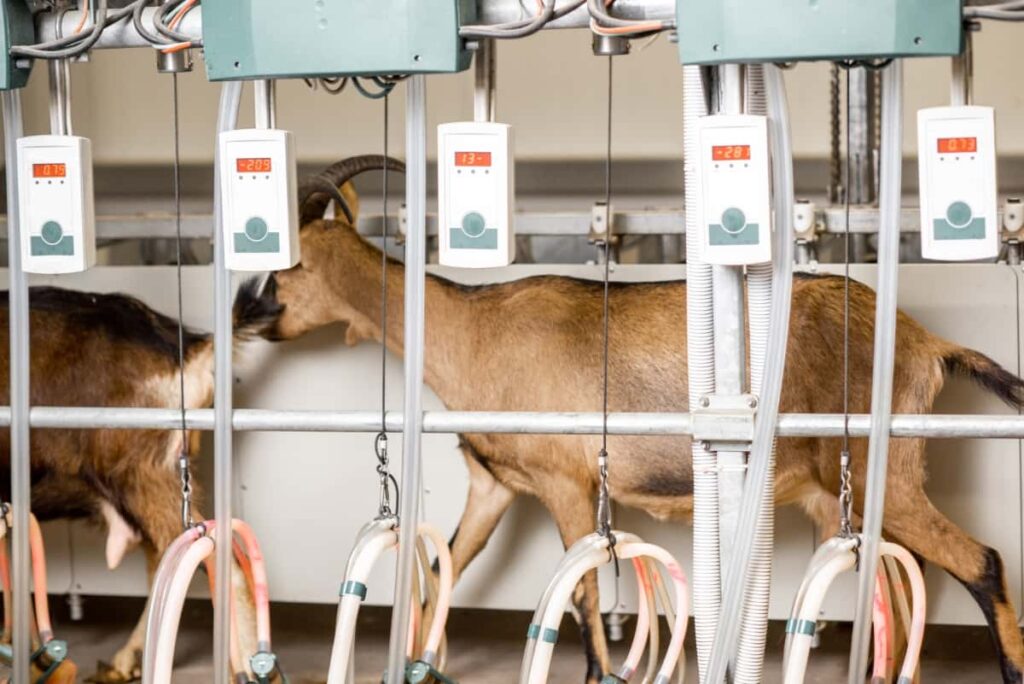Dairy goat farmers play a vital role in the agricultural industry, providing high-quality milk products to consumers worldwide. Increased goat milk production can lead to higher profits for goat farmers, as they can efficiently meet market needs. This boosts the overall sustainability and success of the farm business.

Selecting High-Producing Dairy Goat Breeds
High-producing dairy goat breeds are known for their exceptional milk yield and quality, which is crucial for a successful operation. Breeds like Saanen, Alpine, and Nubian goats are popular choices among farmers due to their ability to produce large quantities of rich and nutritious milk. When selecting high-producing dairy goat breeds, consider factors such as climate adaptability, feed requirements, and lactation period. By knowing these aspects, you can ensure that your herd thrives and produces optimal milk yields for your farm.
Optimal Feeding Strategies for Maximum Milk Yield
Ensuring that your dairy goats receive optimal nutrition is key to maximizing milk production. A good diet that is rich in vitamins, protein, and minerals is essential for promoting healthy lactation. Consider consulting with a livestock nutritionist to formulate a customized feeding plan tailored to your goats’ specific needs. High-quality forage such as alfalfa or clover can significantly boost milk yield.
Supplementing their diet with grains like corn or barley can provide the additional energy needed for increased milk production. Dividing their daily ration into multiple smaller meals throughout the day can help improve digestion efficiency and nutrient absorption. Providing clean water at all times is also vital for maintaining hydration levels and supporting milk production.
The Importance of Fresh Water and Hydration
Providing ample fresh water is not just essential for hydration; it also directly impacts milk production. Goats require clean and fresh water daily to maintain optimal health and milk yield. Dehydration can lead to reduced milk output and even health issues. By ensuring easy access to clean water sources throughout the day, dairy goat farmers can support their herd’s well-being and productivity.
In case you missed it: Goat Farming as a Family Business: Strategies for Success

In hot weather or during lactation, goats’ water intake needs may increase significantly. Monitoring hydration levels and adjusting accordingly is key to maximizing milk production potential.
Managing Goat Health for Sustained Milk Production
Ensuring the health of your dairy goats is crucial for maintaining sustained milk production. Regular veterinary check-ups and vaccinations are essential in preventing illnesses that can affect milk yield. Keep a close eye on your goats’ behavior, appetite, and overall well-being to catch any signs of illness early. Maintaining a clean living environment for your goats is key to preventing diseases and infections.
Proper sanitation practices benefit the health of your animals and contribute to higher milk quality. Provide a good diet rich in nutrients to support optimal health and milk production. Implementing biosecurity measures on your farm can help prevent the diseases among your herd. Quarantine new animals before introducing them to existing ones, practice good hygiene practices, and limit visitors who may unknowingly bring pathogens onto your property.
Breeding Practices to Enhance Milk Quality and Quantity
Breeding practices play a crucial role in enhancing milk quality and quantity in dairy goats. Selecting the right breeding pairs based on genetic potential can significantly impact the overall productivity of your herd. Look for traits such as high milk production, good udder conformation, and disease resistance when choosing which goats to breed.
Crossbreeding can also be an effective strategy to improve milk production in dairy goats. By combining desirable characteristics from different breeds, you can create offspring with enhanced qualities that contribute to higher milk yields. Keep detailed records of each goat’s milk production, health history, and lineage to make informed decisions about future breeding selections.
The Role of Proper Housing in Dairy Goat Well-being
A well-designed and maintained shelter is essential for ensuring the well-being and productivity of your goats. The housing should provide adequate space for each goat to move around comfortably and lie down without feeling crowded. Proper ventilation is crucial to prevent respiratory issues and maintain a healthy environment for the goats.
In case you missed it: Ultimate Guide to Malwa Goat: Explore from Origin to Management Practices

Additionally, access to clean bedding is necessary to keep the goats clean, dry, and free from diseases. Ample natural light can also positively impact their mood and overall health. Furthermore, a secure enclosure helps protect the goats from predators and adverse weather conditions. It’s important to regularly inspect the housing structure for any signs of wear or damage that could compromise its integrity.
Routine Milking Procedures and Hygiene
Establishing a consistent milking schedule is essential for maintaining optimal milk yield. Goats should be milked at the same times each day to ensure their udders are emptied regularly. Proper hygiene during milking is imperative to prevent contamination and maintain milk quality. Additionally, gentle handling during the milking process is key to keeping goats calm and comfortable. Stress can negatively impact milk production, so creating a peaceful environment is beneficial for both the goats and the farmers.
Stress Reduction Techniques for Dairy Goats
Creating a calm environment is crucial for dairy goats to thrive. Implementing stress reduction techniques can significantly improve milk production and overall well-being. The effective method is providing ample space for the goats to move freely and interact with each other. Ensuring a clean and comfortable living area can also help alleviate stress.
Regularly cleaning their pens, providing adequate bedding, and maintaining good ventilation are all essential in creating a relaxing atmosphere for the goats. Establishing a consistent routine for feeding, milking, and handling the goats is another beneficial technique.
Monitoring and Improving Goat Nutrition
By regularly assessing the nutritional needs of your goats, you can ensure they are receiving the proper balance of vitamins and nutrients for optimal health and milk yield. One way to monitor goat nutrition is through regular weight checks and body condition scoring. This helps determine if your goats are maintaining a healthy weight and if adjustments need to be made to their diet.
In case you missed it: Profitable Kenya Goat Breeds for Commercial Dairy and Meat Business

It’s crucial to work with a veterinarian to develop a customized feeding plan tailored to meet your herd’s specific nutritional requirements. Making necessary adjustments based on these findings can lead to improved overall health and increased milk output from your herd.
Leveraging Technology for Efficient Dairy Goat Farming
From automated feeding systems to smart monitoring devices, there are numerous innovative tools available to streamline operations and maximize milk production. The key technology used in dairy goat farming is automated milking systems. Additionally, advancements in data analytics have enabled farmers to track individual goat health metrics and milk production trends more effectively. By leveraging this information, farmers can make informed decisions to optimize their herd’s performance.
Furthermore, the use of GPS technology can help monitor grazing patterns and pasture rotation schedules, promoting healthier goats and higher milk yields. Remember that a well-rounded approach that encompasses all aspects of dairy goat farming will lead to sustained productivity and profitability. By following these strategies and continuously striving for improvement in all areas of dairy goat management, you can achieve maximum milk production on your farm.
- Types of Grass Growing for Goat Farm
- How to Train Goats for Milking: A Beginners Guide
- Goat Milking Practices and Equipment: A Beginner’s Guide
- Goat Farming for Fiber: Producing Mohair and Cashmere
- Maximizing Goat Milk Production: Tips for Dairy Goat Farmers
- Goat Farming as a Family Business: Strategies for Success
- Profitable Kenya Goat Breeds for Commercial Dairy and Meat Business
- Unlock the Secrets of Oberhasli Goat: Discover Raising and Management Practices
- Ultimate Guide to Myotonic Goats: Explore Profile to Raising